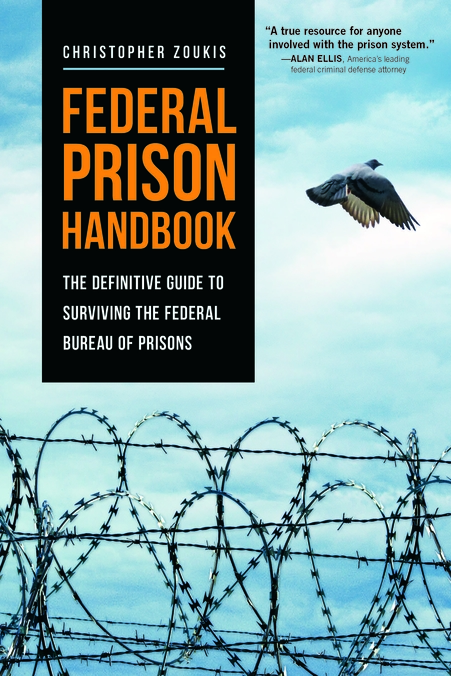Prison Profiteers - Argus Leader 2008
Argus Leader, Jan. 1, 2008.
http://www.argusleader.com/apps/pbcs.dll/articl...
Book Review - Prison Profiteers - Argus Leader 2008
From the Argus Leader
June 4, 2008
My Voice: Tax-subsidized prison gravy train must end
Ronald R. Fraser
In South Dakota's booming prison economy there are winners and losers. Inmates face financial ruin, and state taxpayers lose, too - about $19,000 per year, per inmate. Prison entrepreneurs for whom each inmate is a government-subsidized business opportunity are the big winners.
Growing nationally by 3.4 percent a year for the past 10 years, federal, state and local prisons hold 2.3 million inmates - one-half of whom are non-violent and small-time drug law offenders. From 2000 to 2005, South Dakota's prison population grew at a steady rate of 5.8 percent per year.
South Dakota's annual taxpayer contribution for state prisons and local jails - $92 million in 2005 and rising - keeps the prison market hot. Here is how that money is used to exploit the losers and enrich the winners.
Public jobs: Of the 720,000 state and local corrections employees in the U.S. in 2005, 1,448 worked in South Dakota guarding 4,827 inmates. That means for every three new inmates locked up in South Dakota, one new corrections job follows.
Private profiteers: A new book by Tara Herivel and Paul Wright titled, "Prison Profiteers: Who Makes Money from Mass Incarceration," tells how the prison gravy train actually works. In addition to supplying food, clothing and medical care, private companies profit in other, less visible ways. Here we learn from a University of Michigan professor how telephone companies and prisons in South Dakota charge extra-high rates for collect calls from inmates. Once MCI, Sprint and others began competing with the Baby Bells and AT&T, end-user rates for collect calls from prisons went up, not down, as was the case in the nonprison market. Exclusive phone service agreements went to firms offering price-gouging rates and large payments to operators of prisons. In the 1990s, 90 percent of the correctional systems nationwide received a percentage of these telephone profits and, by 2000, the share going to the prisons ranged from 44 percent in California to 60 percent in New York.
Prisoners, of all people in the country, have the greatest need to rely on collect calls, especially to stay in touch with their families. What excuse is there for price-gouging these families, many of whom already are suffering the loss of a breadwinner?
Political influence: Nationally, more than 85,000 inmates are held in private, for-profit facilities. To sell their services in state capitals, we learn in another chapter of Herivel and Wright's book that "corporations with a stake in the expansion of private prisons invested $3.3 million in candidates for state office and state political parties in 44 states over the 2002-04 election cycle."
Cheap labor: While U.S. laws prohibit importing products made by prisoners in other countries, Gordon Lafer, a University of Oregon professor, reports that about 80,000 U.S. inmates work in 30 states where laws permit private firms to use convict labor. In Ohio, for example, a Honda supplier pays prison workers $2 per hour. These private firms do not pay for vacations, sick leave or overtime, and workers can be dropped at will.
Liberty for sale: According to a recent New York Times article, bail bondsmen occupy a unique, for-profit niche in the American justice system. In all states except Illinois, Kentucky, Oregon and Wisconsin, to avoid going directly to jail, an accused person must pay a bondsman a non-refundable fee - often 10 percent of the bond - even if he or she appears for all court proceedings. In some states the bondsman is even permitted to hunt down and capture a client who fails to appear in court, breaking into homes without a warrant if necessary.
What can be done to end this tax-subsidized prison gravy train? First, the laws and policies made in Pierre must stop filling state prisons with nonviolent drug users who should be in drug treatment facilities, not prisons. Second, lawmakers must stop passing ever-longer, one-size-fits-all mandatory minimum sentences that only tie the hands of courtroom judges and needlessly fill our prisons.
Until then, prison profiteers will continue to exploit both South Dakota inmates and its citizens in whose name the state prisons are built and operated.
From the Argus Leader
June 4, 2008
My Voice: Tax-subsidized prison gravy train must end
Ronald R. Fraser
In South Dakota's booming prison economy there are winners and losers. Inmates face financial ruin, and state taxpayers lose, too - about $19,000 per year, per inmate. Prison entrepreneurs for whom each inmate is a government-subsidized business opportunity are the big winners.
Growing nationally by 3.4 percent a year for the past 10 years, federal, state and local prisons hold 2.3 million inmates - one-half of whom are non-violent and small-time drug law offenders. From 2000 to 2005, South Dakota's prison population grew at a steady rate of 5.8 percent per year.
South Dakota's annual taxpayer contribution for state prisons and local jails - $92 million in 2005 and rising - keeps the prison market hot. Here is how that money is used to exploit the losers and enrich the winners.
Public jobs: Of the 720,000 state and local corrections employees in the U.S. in 2005, 1,448 worked in South Dakota guarding 4,827 inmates. That means for every three new inmates locked up in South Dakota, one new corrections job follows.
Private profiteers: A new book by Tara Herivel and Paul Wright titled, "Prison Profiteers: Who Makes Money from Mass Incarceration," tells how the prison gravy train actually works. In addition to supplying food, clothing and medical care, private companies profit in other, less visible ways. Here we learn from a University of Michigan professor how telephone companies and prisons in South Dakota charge extra-high rates for collect calls from inmates. Once MCI, Sprint and others began competing with the Baby Bells and AT&T, end-user rates for collect calls from prisons went up, not down, as was the case in the nonprison market. Exclusive phone service agreements went to firms offering price-gouging rates and large payments to operators of prisons. In the 1990s, 90 percent of the correctional systems nationwide received a percentage of these telephone profits and, by 2000, the share going to the prisons ranged from 44 percent in California to 60 percent in New York.
Prisoners, of all people in the country, have the greatest need to rely on collect calls, especially to stay in touch with their families. What excuse is there for price-gouging these families, many of whom already are suffering the loss of a breadwinner?
Political influence: Nationally, more than 85,000 inmates are held in private, for-profit facilities. To sell their services in state capitals, we learn in another chapter of Herivel and Wright's book that "corporations with a stake in the expansion of private prisons invested $3.3 million in candidates for state office and state political parties in 44 states over the 2002-04 election cycle."
Cheap labor: While U.S. laws prohibit importing products made by prisoners in other countries, Gordon Lafer, a University of Oregon professor, reports that about 80,000 U.S. inmates work in 30 states where laws permit private firms to use convict labor. In Ohio, for example, a Honda supplier pays prison workers $2 per hour. These private firms do not pay for vacations, sick leave or overtime, and workers can be dropped at will.
Liberty for sale: According to a recent New York Times article, bail bondsmen occupy a unique, for-profit niche in the American justice system. In all states except Illinois, Kentucky, Oregon and Wisconsin, to avoid going directly to jail, an accused person must pay a bondsman a non-refundable fee - often 10 percent of the bond - even if he or she appears for all court proceedings. In some states the bondsman is even permitted to hunt down and capture a client who fails to appear in court, breaking into homes without a warrant if necessary.
What can be done to end this tax-subsidized prison gravy train? First, the laws and policies made in Pierre must stop filling state prisons with nonviolent drug users who should be in drug treatment facilities, not prisons. Second, lawmakers must stop passing ever-longer, one-size-fits-all mandatory minimum sentences that only tie the hands of courtroom judges and needlessly fill our prisons.
Until then, prison profiteers will continue to exploit both South Dakota inmates and its citizens in whose name the state prisons are built and operated.







